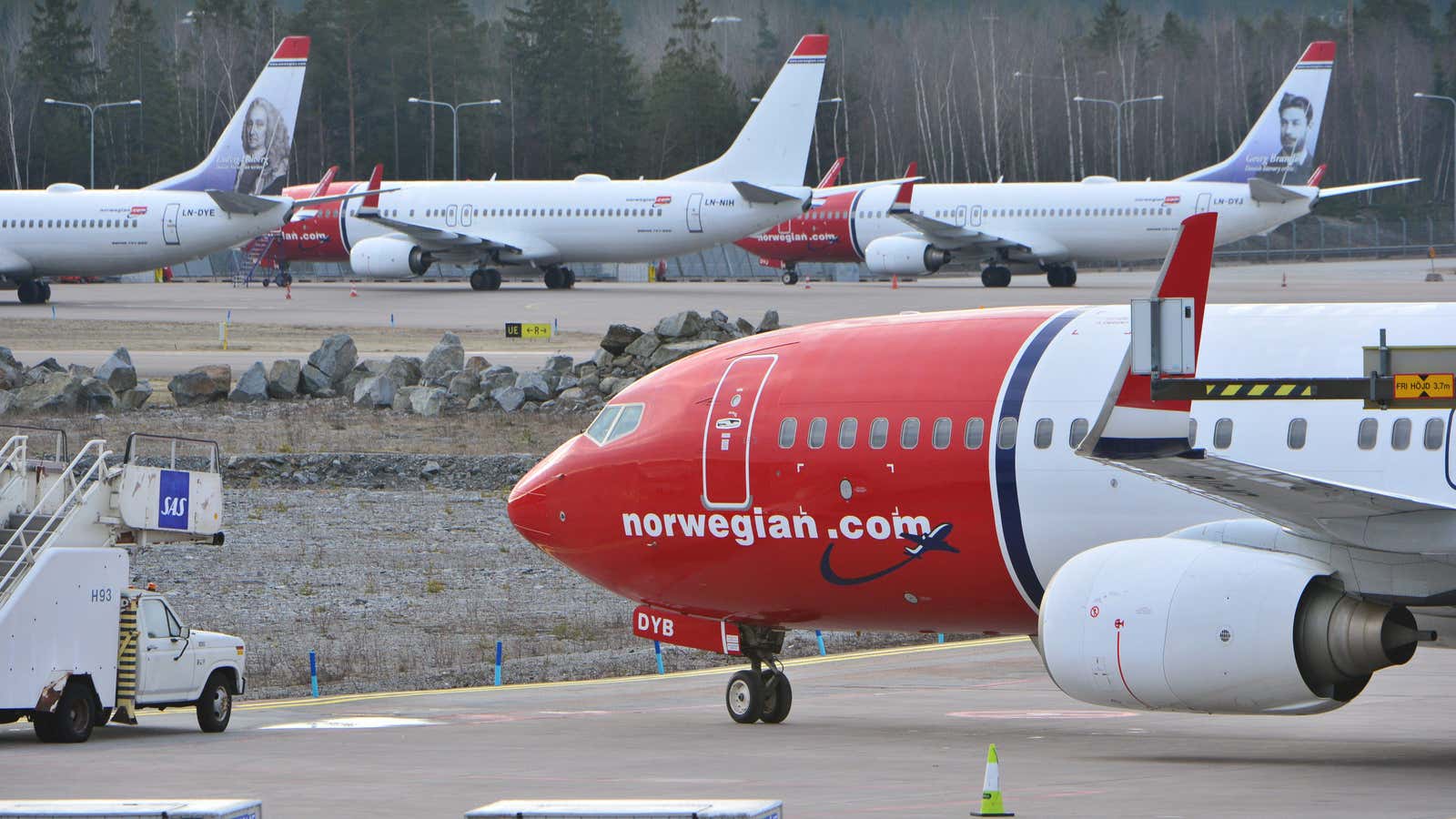If you add routes, will they fly? That’s the big question airline executives struggle with before starting up new service. Most airlines won’t grow their footprint unless they’re confident that a new vacation hot-spot, or growing businesses ties between two cities will insure more traffic. To examine the patterns behind how air travel expanded this year, Quartz looked at flight path data from 2017, and mapped all the new routes that airlines added to their rosters.
International Flights
Despite all the political rhetoric about travel bans and closed borders, airlines added more than 500 international routes in 2017, connecting cities that prior to 2016 had no flights .
China in flight
Of the 416 new routes added in China in 2017, 339 were domestic. China’s rapidly growing wealth has continued to make air travel more and more accessible.
Three new routes between China and Los Angeles were added in 2017 by Chinese carriers. Three were also added to Moscow. Bangkok’s airports, though, saw the most new connections: eight cities.
US boomtowns and vacation spots
The economic boom of the San Francisco Bay Area caused a multiplication of new air routes to San Francisco, Oakland, and San Jose. Airlines added direct flights between those airports and 10 new cities.
Airports in Florida saw many new routes too, of the 23 new domestic routes to the state in 2017, four were Florida to Cleveland, and four were Florida to Louisville. All eight were added by Allegiant Air.
Spokane saw new connections to the major air hubs of San Francisco, Chicago O’Hare, and Dallas-Fort Worth. Officials in Washington successfully lobbied United and American Airlines to initiate the service.
Ultra-low-cost airlines
There were 58 new international connections to the US last year. Many of those were operated by so-called ultra-low-cost carriers—airlines that charge bargain prices for fares, then add fees for products or services that traditional airlines offer for free, like in-flight soft drinks, selecting a seat assignment, or putting a bag in the overhead bin.
Norwegian Air Shuttle, an airline controversial in the industry for its aggressive business and labor practices, launched eight routes from Providence, Rhode Island and from the 50-miles-north-of-New-York-City Newburgh, to various destinations in Ireland and the UK.
Wizz Air, the largest low-cost airline in Central and Eastern Europe, added 56 routes.
Ryanair, the low-cost carrier based in Ireland, connected new cities all over Europe with 92 routes that didn’t exist on any airline the year before. It connected 13 new cites to Naples, eight to Gerona, Spain and eight to Valencia, Spain.
Low-cost carriers comprised nine of the ten airlines adding the most european routes in 2017. The three above, along with Wizz, EasyJet, Blue Air, Air Baltic, Jet2, and Eurowings were responsible for 47% of the 481 new routes added to european destinations in 2017.
All together, that adds up to 1,310 direct brand new direct flights around the globe created in 2017. Whether or not there is enough passenger interest to fill those seats is a question that will only be answered in time. Which means all those airline CEOs will have to standby.
Note: For our analysis we limited new routes to those that were scheduled to have an average of 100 seats of capacity per week, and averaged at least one round-trip per week over the course of the whole year. We further, limited the universe of flights to those operated by airlines that were listed in OAG’s schedule data in both 2016 and 2017. OAG’s data was provided to us by Planestats.com.
